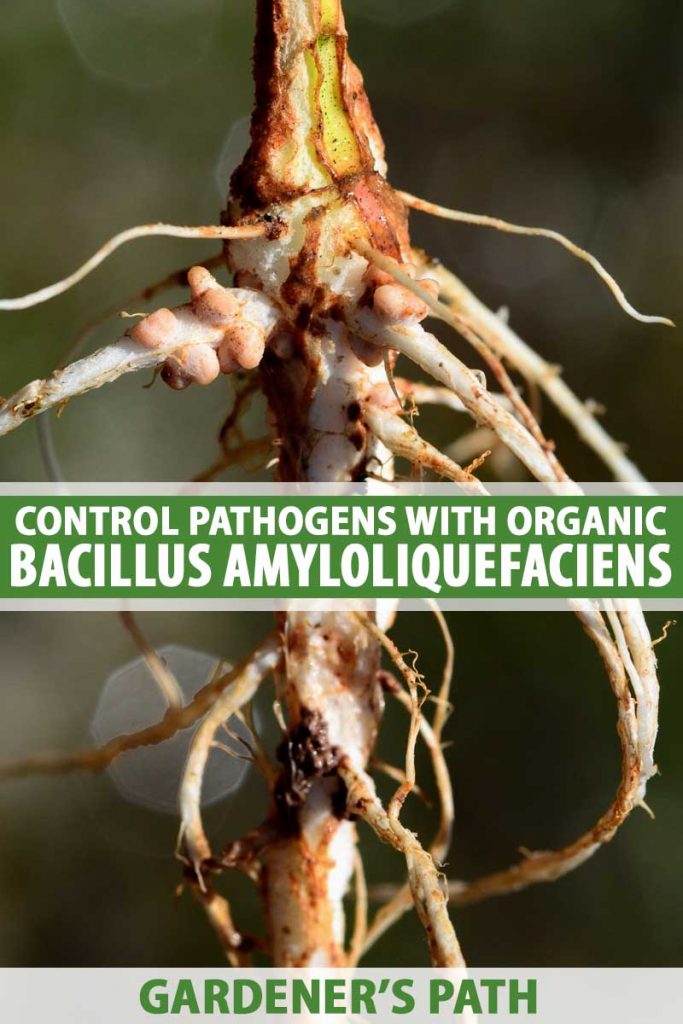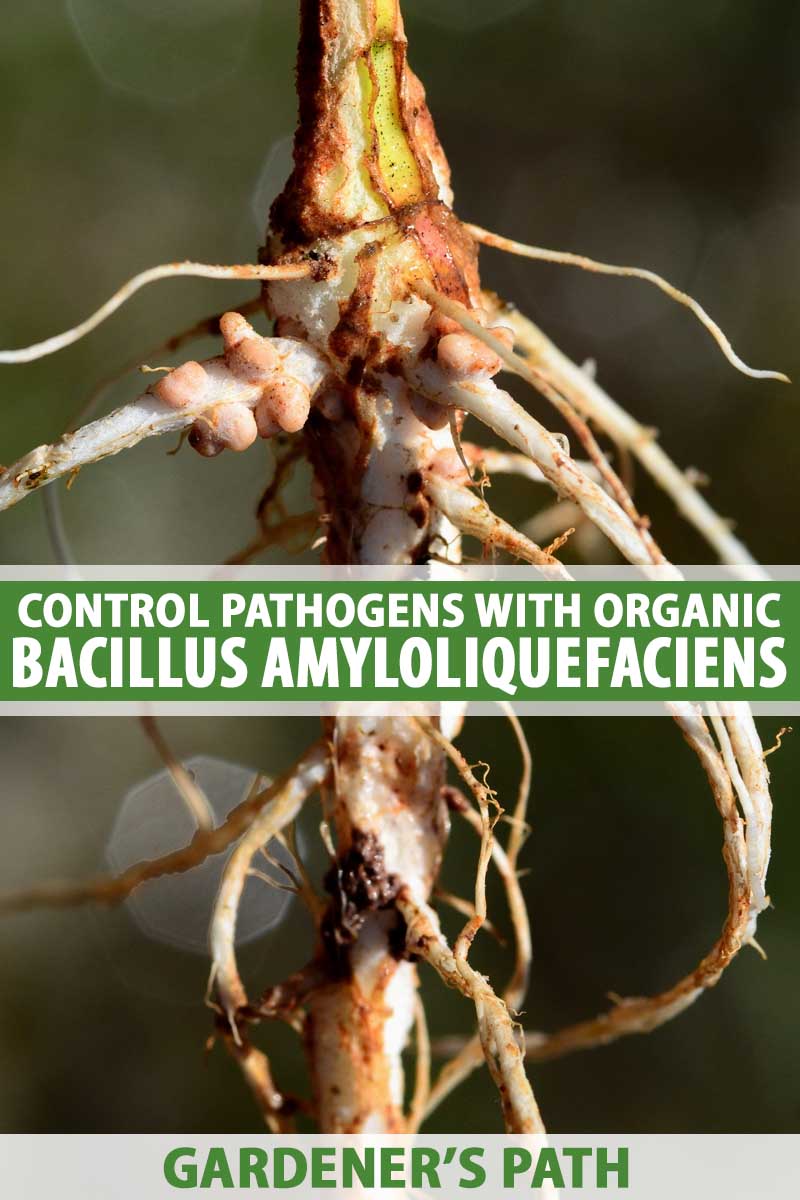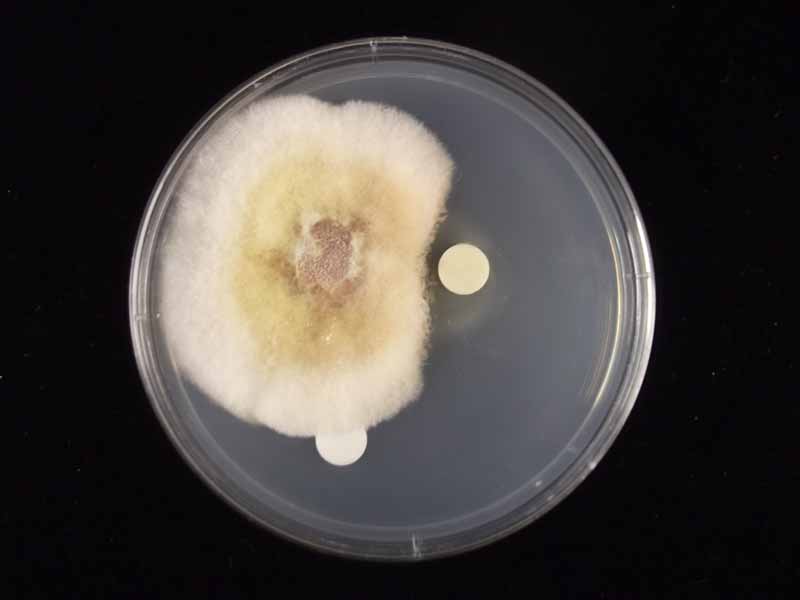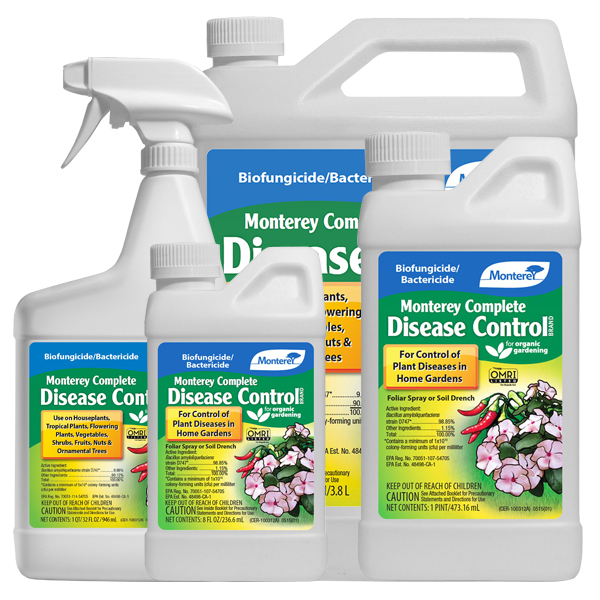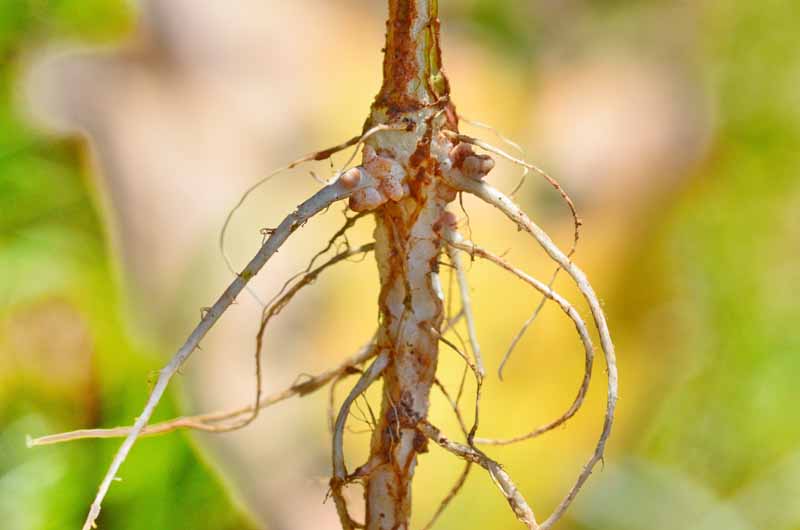Many strains of these bacteria enhance plant growth and inhibit plant pathogens, greatly improving the health of plants. They colonize the roots of plants and reduce plant disease by both direct and indirect action. BAA strains produce a number of chemicals, including a number of antibiotics that inhibit the germination of fungal spores and the growth of the fungi. We link to vendors to help you find relevant products. If you buy from one of our links, we may earn a commission. Many strains of BAA are so helpful to plants that they are known as plant growth-promoting rhizobacteria (PGPR) – a designation for powerful bacteria that improve plant health. In this guide, we will review how Bacillus amyloliquefaciens can improve plant health and provide tips on how to use these biocontrol agents.
BAA Strains Vary in Their Properties
Just like the closely related bacteria Bacillus subtilis, B. amyloliquefaciens is composed of many different strains, which vary in their production of antibiotics and ability to colonize plants. Research has been conducted on a dizzying array of strains, but most commercial formulations are comprised of a few key strains, especially D747 (often sold as Double Nickel or Stargus). The powerhouse strain FZB42 that is sold commercially has been found to be a different species of Bacillus and is now known as B. venezensis.
How Can BAA Help Your Garden?
The biopesticide BAA can both help prevent damage from pathogens and act as a biofertilizer. These bacteria live in a prime location – they are components of the rhizosphere – the lush area around plant roots where the plants secrete sugars and vitamins that benefit the growth of the microbes in this area. In addition, a number of companies sell BAA to control a variety of plant-parasitic nematodes.
The Bacteria Colonize Plant Roots
BAA starts its growth on the primary roots. First, it grows underneath the outermost cells. Then it spreads along the root surfaces. By being in this key location, the bacteria block the growth of pathogens on the roots. The plants also benefit from the presence of BAA because these bacteria produce compounds that stimulate plant growth and are taken up by the roots. This makes these bacteria plant growth-promoting rhizobacteria (PGPR) – like their close relative Bacillus subtilis. The end result is that plants grow better due to the fertilization that the bacteria provide. They provide both nitrogen and phosphorus. In addition, BAA activates the plants’ own resistance system, which is active throughout the whole plant. This helps the plant fend off foliar pathogens.
BAA Outcompetes Other Microbes
These bacteria use several mechanisms that enable them to prevail over other microbes in the soil. First, they tie up key nutrients that other organisms need for survival. For example, iron is necessary for growth and is present at low concentrations in the soil. BAA produces compounds called siderophores that bind the iron and prevent other microbes from accessing it. They also produce antibiotics that affect other microbes. Like Bacillus subtilis, BAA produces compounds like iturins and fengmycin that inhibit the germination of fungal spores and the development of the fungal germ tubes. In addition, the bacteria produce enzymes that break down other microbes! BAA can produce antibiotics that dissolve other bacteria. And some strains produce chitinases – enzymes that break down the fungal cell walls that are composed of chitin.
Bacillus amyloliquefaciens is Highly Resistant to Chemicals
These bacteria have another advantage over other bacteria in the soil – they are unusually resistant to the chemicals that plants produce to defend themselves. Not only that – they are also normally unaffected by nematicides, herbicides, and most fungicides. They could be affected by antibiotics used to control plant pathogenic bacteria, but these compounds are usually only applied to the leaves of apple or pear to control fire blight. It is highly unlikely that foliar antibiotic applications would affect soil inoculants.
BAA is Safe for Humans and Other Organisms
Since BAA is a common soil inhabitant and is found naturally on fresh produce, it is likely that people are exposed to it on a regular basis. The species is not known to produce any toxins that affect mammals and has never been associated with food-borne disease outbreaks. Extensive testing for the registration of strain D747 as a pesticide with the Environmental Protection Agency (EPA) found no effect on non-target organisms, including rats, fish, honeybees, and plants. The only requirements for personal protective gear are for pesticide handlers that would frequently be exposed to the strain for prolonged periods. They are required to wear long-sleeved shirts, a dust/mist filtering respirator, and waterproof gloves.
Plant Pathogens Targeted by Bacillus amyloliquefaciens
This organism affects a range of fungal and bacterial pathogens. The original EPA application lists both soilborne and foliar pathogens. Soilborne fungal pathogens include Fusarium, Pythium, Rhizoctonia, Phytophthora, and Verticillium, while foliar ones include several rusts, powdery mildew, downy mildew, Botrytis cinerea, and Alternaria. Foliar bacterial pathogens include Pseudomonas syringae pv. tomato and Xanthomonas. In Canada, the strain is registered to use as a preventative measure to control fire blight. BAA comes in two types of formulations. One is a water soluble liquid concentrate that can be sprayed, applied with ground equipment, or added into irrigation. The other type is a talc-based powder that is applied in a dry planter box. Here are some options: BONIDE® Revitalize® Biofungicide with B. amyloliquefaciens You can find Bonide Revitalize as a concentrate to mix with water or in ready-to-spray bottles available from Arbico Organics. Monterey Complete Disease Control Monterey Complete Disease Control is also available as concentrate and ready-to-spray from Arbico Organics. Arbico Organics provides a number of products that contain BAA. Arber Biofungicide Another option is Arbor Biofungicide concentrate available in 16-ounce bottles from Gardener’s Supply Company. These bacteria don’t survive storage as long as other soil inoculants, and you should be careful about storing them as recommended on the label. You will also need to reapply the bacteria each season. They don’t cause long-term changes in the soil. You can combine BAA with other soil inoculants. Trichoderma and arbuscular mycorrhizal fungi (AMF) can all coexist with Bacillus amyloliquefaciens.
Naturally Occurring Bacillus amyloliquefaciens Offers Many Benefits
Bacillus amyloliquefaciens colonizes plant roots, putting it in a prime position to outcompete pathogens for growth on the plant. These bacteria fertilize the plant by providing nutrients that are in short supply and producing chemicals that induce the plant grow. They also induce the plant to activate its own resistance mechanism, therefore controlling even more pathogens. This species of Bacillus also outcompetes other microbes in the soil and can inhibit both bacteria and fungi. Have you used BAA to prevent disease in your garden? If so, let us know how it worked in the comments. And read on for information on other biofungicides and biopesticides to include:
Trichoderma Improves Plant Growth and Kills Fungal PathogensHow to Use Streptomyces lydicus to Control Plant DiseasesHow to Use Bacillus thuringiensis (Bt) to Control Insect Pests
